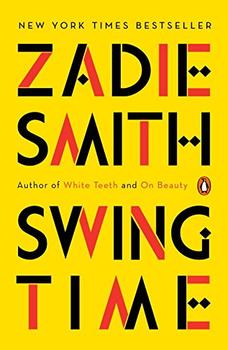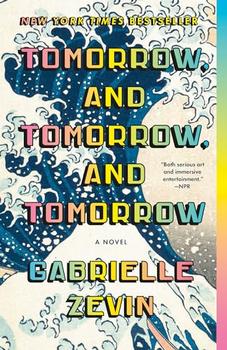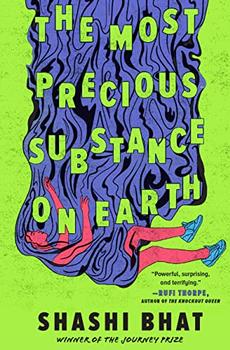Summary | Excerpt | Reviews | Beyond the book | Read-Alikes | Genres & Themes | Author Bio

Zadie Smith has won literary acclaim as well as readers' hearts with her sophisticated novels reflecting on race and class in contemporary western culture. Of Jamaican and English heritage, Smith has roots in London but also lives in the United States, where she is a professor of fiction at New York University. She crosses boundaries, and her characters often do too: like her, they are biracial and trying to figure out who they are as they move between cultures.
In some ways, the dynamic of Swing Time is most like Smith's earlier novel, White Teeth: the narrator's father is white and her mother is Jamaican. However, here the plot rests on the central friendship between the unnamed narrator and her friend Tracey, whom she recalls meeting through dance lessons at age seven in 1982. They live in the same neighborhood and attend the same school, and over the course of tap and ballet lessons with Miss Isabel they become inseparable. From the start, the narrator is amazed by the match in their skin color: it's like looking in a mirror. Tracey is also biracial, with a white mother and a black father who claims to be a backup dancer for Michael Jackson – but in fact is in prison for petty drug-dealing.
Whatever the outward similarities, it's clear there are fundamental differences between the girls. The narrator has flat feet and is better at singing, while Tracey is a natural dancer. The narrator's mother is fiercely intelligent and determined to get ahead; a mature student, she wears a beret on her Afro, espouses Marxist and feminist viewpoints, and later becomes a Member of Parliament. By contrast, Tracey's mother fits a white-trash stereotype, and Tracey is mischievous and confrontational. Tracey aptly sums up the difference between her friend and herself: Cabbage Patch Kids versus Garbage Pail Kids. Unsurprisingly, the narrator's parents don't want their daughter hanging out with Tracey.
One seemingly harmless example of Tracey's "bad influence" comes back to haunt the girls: at Lily Bingham's tenth birthday party they get in trouble for dressing in skimpy clothes and acting out pop star Aimee's raunchy music video. Ironically, the narrator later meets Aimee through her job at a startup music channel and works as her assistant for nearly a decade. Aimee takes an interest in alleviating poverty and over the years founds a girls' school in West Africa and adopts a baby from the same village. The narrator feels uncomfortable about this mixture of celebrity and charity and tries to gain a better understanding of African culture and local Muslim people rather than just doing the average Westerner's "poverty tourism."
The narrator, looking back from 2008, alternates chapters about her friendship with Tracey with ones about her work with Aimee in Africa and the USA. Unfortunately, the Africa material is not very convincing or lively – according to the acknowledgments, Smith drew on a scholar's work – and I was impatient for these sections to end so we could get back to the heart of the novel: the friendship with Tracey. The way this relationship shifts over time and builds up betrayals and bitterness as the girls go their separate ways is the novel's most potent element, and will especially appeal to fans of Elena Ferrante. However, the way Tracey turns out struck me as a clichéd sociologist's picture of the girl with an absent father; likewise, the Aimee subplot is a fairly obvious imitation of the brouhaha over Madonna and Angelina Jolie using their reputation to adopt children from Africa.
My favorite character is the narrator's feisty mother, and I felt deep compassion for Tracey's feelings of being trapped in a life she doesn't want. In the same way, I could sympathize with the narrator's occasional feelings of not belonging and just watching life happening without really experiencing it. As she says during Aimee's son's lavish birthday party, "I could see what everyone was feeling, but I was not with them and could not feel it."
In general, though, I found the narration to be claustrophobic and felt that additional points of view would open the novel out. For despite its geographical and chronological sprawl, Swing Time feels insular, which saps the power of any potential messages about how race, money, and class still define and divide us. The title's reference to a Fred Astaire musical (see 'Beyond the Book') suggests that music and dance should be linking elements, but I couldn't see those connections working out. The novel takes on a lot of heavy themes but even in its nearly 500 pages can't quite pull them together.
A new Zadie Smith novel is an event; this one is still worth reading, but it definitely disappointed me in comparison to White Teeth and On Beauty.
![]() This review was originally published in The BookBrowse Review in November 2016, and has been updated for the
January 2018 edition.
Click here to go to this issue.
This review was originally published in The BookBrowse Review in November 2016, and has been updated for the
January 2018 edition.
Click here to go to this issue.

If you liked Swing Time, try these:

Tomorrow, and Tomorrow, and Tomorrow
by Gabrielle Zevin
Published 2024
In this exhilarating novel by the best-selling author of The Storied Life of A. J. Fikry two friends - often in love, but never lovers - come together as creative partners in the world of video game design, where success brings them fame, joy, tragedy, duplicity, and, ultimately, a kind of immortality.

The Most Precious Substance on Earth
by Shashi Bhat
Published 2023
Journey Prize winner Shashi Bhat's sharp, darkly comic, and poignant story about a high school student's traumatic experience and how it irrevocably alters her life, for fans of 13 Ways of Looking at a Fat Girl, Girlhood, and Pen15.
Your guide toexceptional books
BookBrowse seeks out and recommends the best in contemporary fiction and nonfiction—books that not only engage and entertain but also deepen our understanding of ourselves and the world around us.